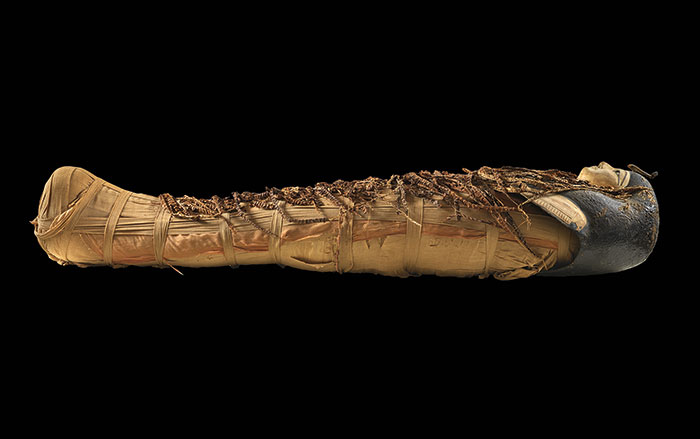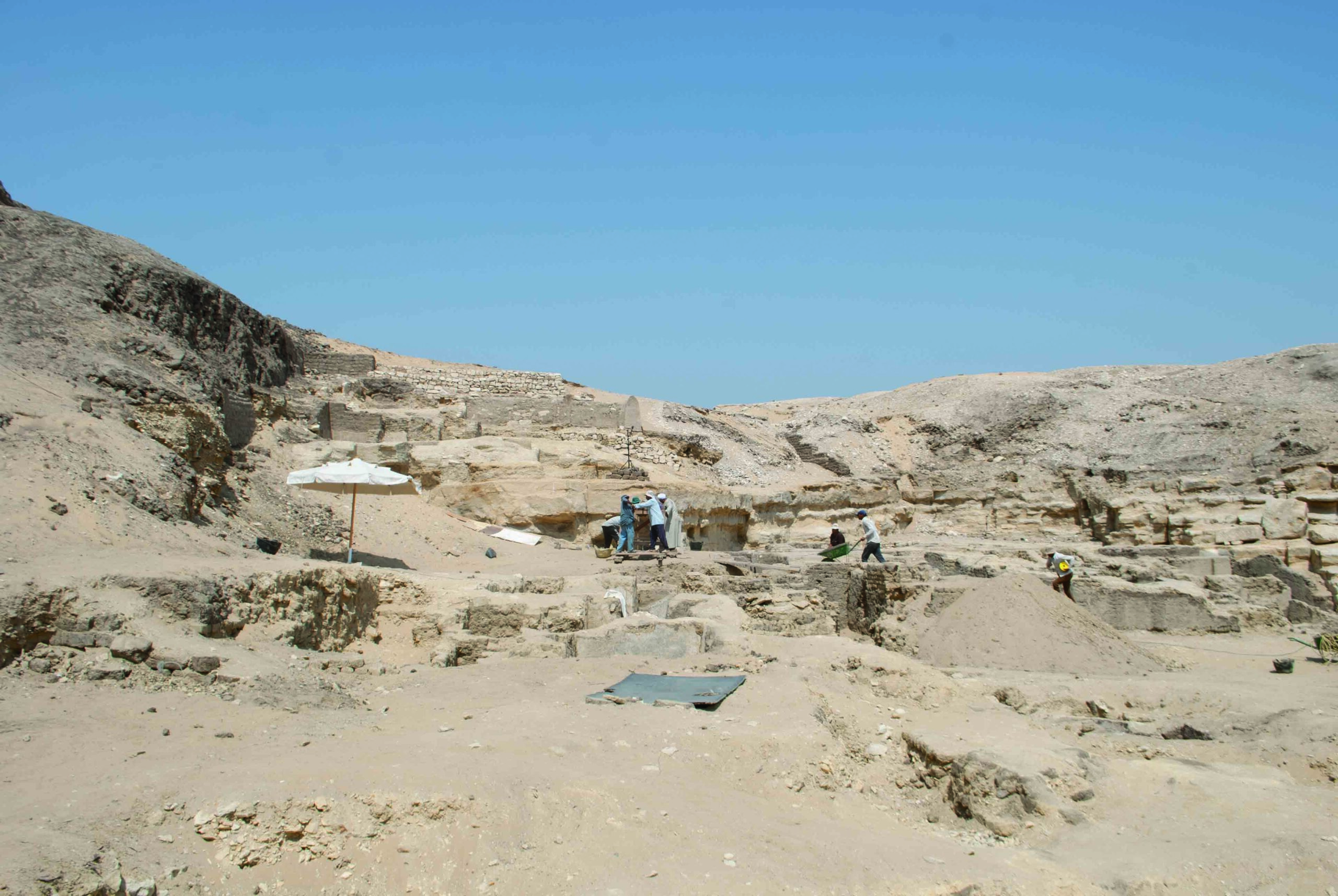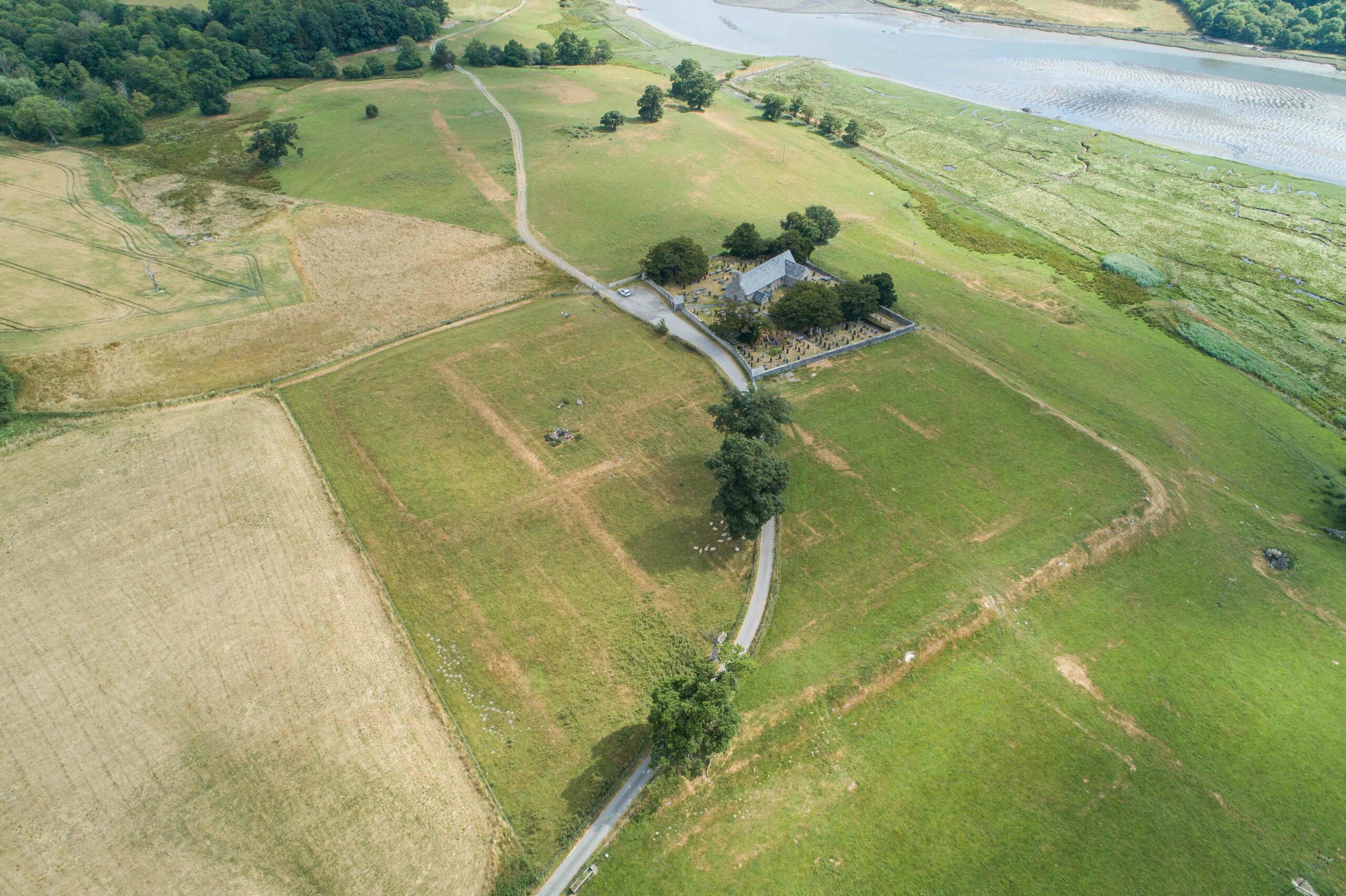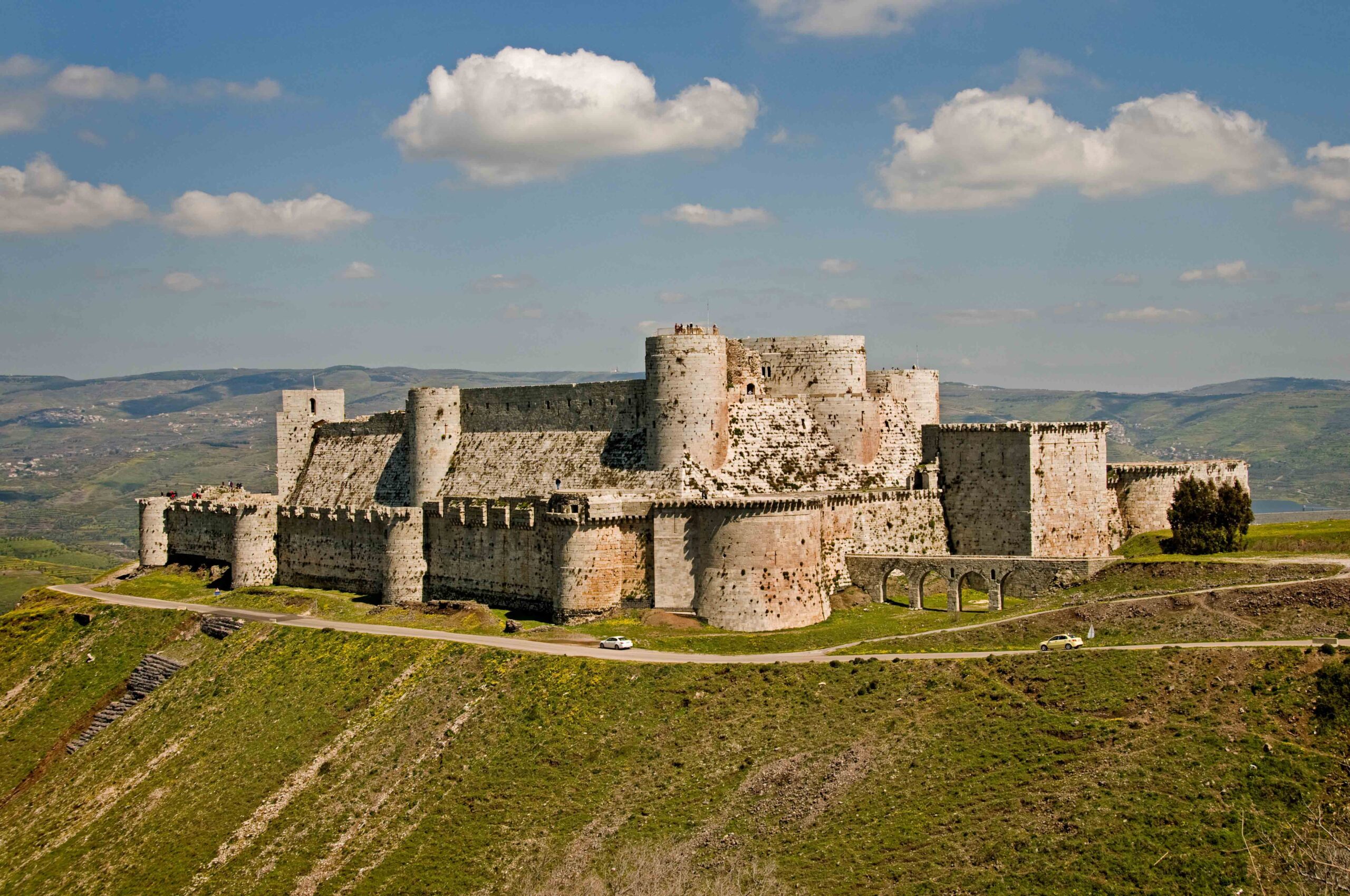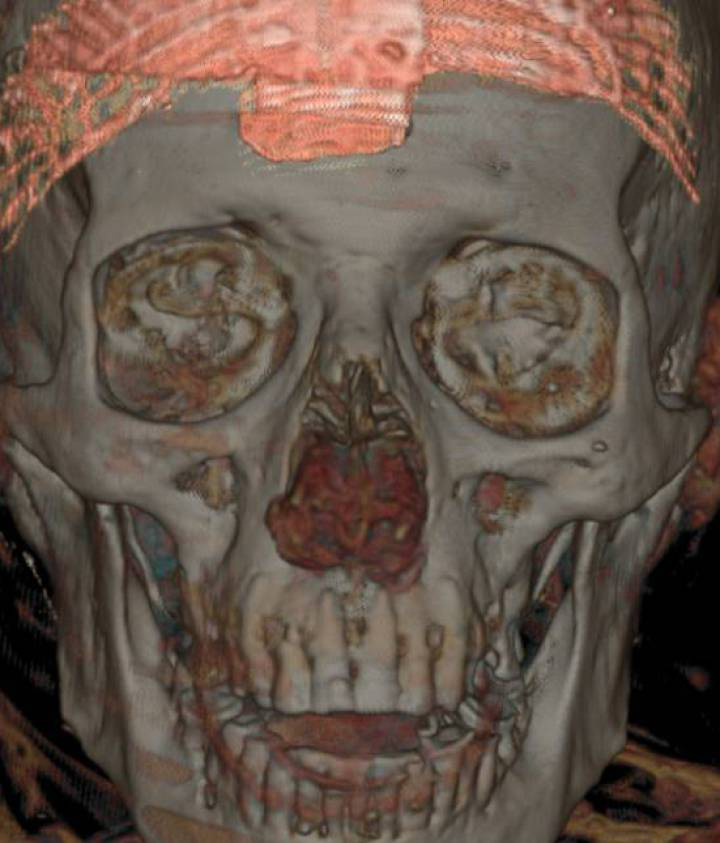
MADRID, SPAIN—According to an El País report, researchers at Spain’s National Archaeology Museum have analyzed the results of computed tomography scans conducted on three Egyptian mummies several years ago, and determined that one of the mummies belonged to Nespamedu, a high-ranking priest who lived between 300 and 200 B.C. The nearly 3,000 images of Nespamedu’s mummy revealed a range of charms and plaques tucked in its wrappings. The iconography of these items suggests he worked as an eye doctor in a chapel in Saqqara, and was Ptolemy II’s personal eye physician, which may have required him to travel to Alexandria. This conclusion is based on the presence of two plaques that feature the god Thoth and the Eye of Horus. Thoth was known in Egyptian mythology for replacing Horus’ eye after it was lost in a battle with Set, the god of chaos. For this reason, Thoth is seen as the god of ophthalmologists. On his head, Nespamedu wore a headband adorned with a winged scarab charm with a solar disc that featured an image of the god Khepri, who was linked to resurrection and rebirth. Nespamedu also wore a Usekh collar, an item reserved for the Egyptian elite. To read about another recent discovery in Egypt, go to “Mummy Workshop.”



